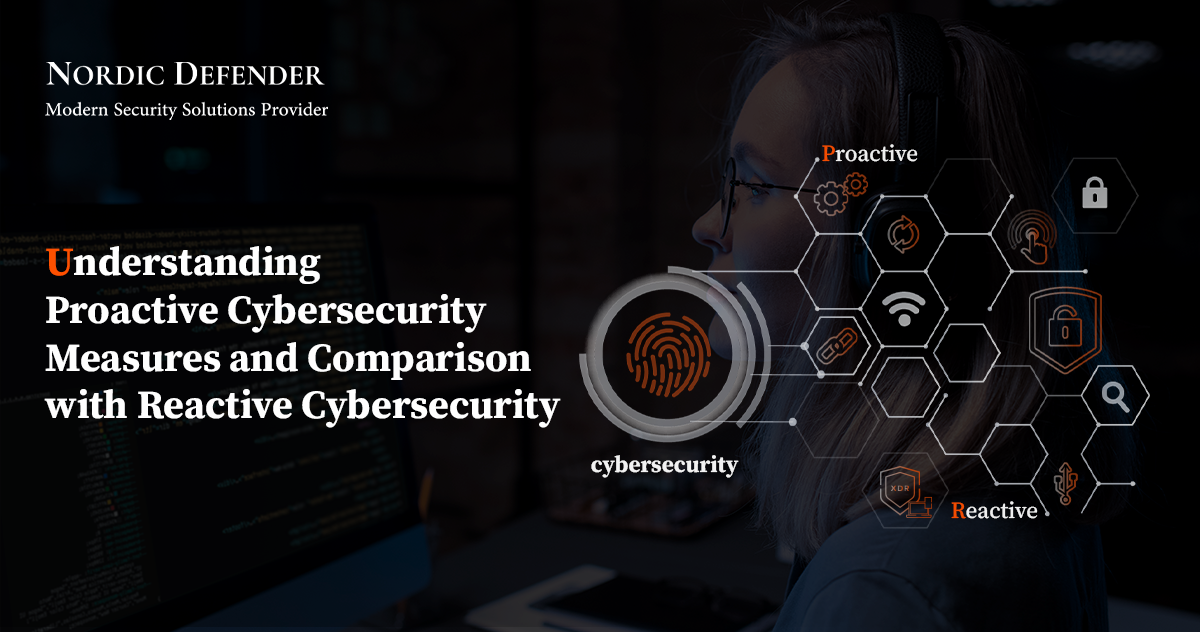
Cybersecurity Proactive Protection Remote Work
Cybersecurity proactive protection when working remotely is crucial in today’s digital landscape. Remote work environments present unique security challenges, requiring proactive measures to safeguard sensitive data and company resources. This blog post delves into the evolving security threats, best practices for remote access, network security, and crucial security awareness training. We’ll also explore data protection, incident response, and the importance of staying ahead of evolving cyber risks.
The increasing reliance on remote work necessitates a shift in security protocols. Traditional workplace security measures often fall short in the remote context. This post will explore the critical differences and provide practical strategies for building a robust security posture for remote workers.
Remote Work Security Landscape
The shift to remote work has dramatically altered the cybersecurity landscape. Traditional office security perimeters are no longer sufficient. Remote workers often utilize personal devices and less secure networks, creating new attack vectors and vulnerabilities. Understanding these evolving threats is crucial for safeguarding sensitive data and maintaining productivity.The remote work environment presents a unique set of security challenges.
The blurring lines between personal and professional devices and networks creates a complex security posture. Organizations must adapt their security strategies to address these new threats and vulnerabilities, and provide training and support to remote employees.
Evolving Security Threats in Remote Work
Remote workers often connect to networks using personal devices and Wi-Fi hotspots, which may have less stringent security measures than corporate networks. This increased reliance on personal devices and networks introduces significant vulnerabilities. Phishing attacks, malware infections, and social engineering tactics targeting remote workers are becoming more sophisticated and frequent.
Emerging Attack Vectors Targeting Remote Workers
Attackers are leveraging several new attack vectors specifically designed for remote work environments. These include:
- Phishing through remote access platforms: Attackers are increasingly targeting remote access platforms (e.g., VPNs, remote desktop protocols) to gain unauthorized access to corporate networks. These attacks exploit vulnerabilities in remote access tools and often involve impersonation or manipulation.
- Compromised personal devices: Personal devices used for work are frequently less secure than corporate-issued ones, making them attractive targets for malware infections. These infections can then be leveraged to access corporate networks.
- Social engineering tactics targeting remote workers: Attackers are using social engineering tactics to trick remote workers into revealing sensitive information or performing actions that compromise security. This includes impersonating colleagues, exploiting trust, and manipulating human psychology.
Comparison of Traditional and Remote Work Security Measures
Traditional workplace security often relied on a clear separation between the corporate network and the outside world. This “castle-and-moat” approach is no longer practical for remote work. Remote work necessitates a more layered and proactive security strategy. Remote security measures need to address the use of personal devices, less secure networks, and increased reliance on cloud services.
This involves robust security protocols for remote access, enhanced device security, and comprehensive training programs for remote workers.
Common Security Risks and Their Impact on Remote Workers
The table below Artikels common security risks and their potential impact on remote workers.
| Security Risk | Description | Impact on Remote Workers |
|---|---|---|
| Phishing | Deceptive emails or messages designed to steal credentials or sensitive information. | Compromised accounts, data breaches, financial loss, reputational damage. |
| Malware | Malicious software designed to damage or disable systems, steal data, or disrupt operations. | System crashes, data loss, financial loss, operational disruption, potential exposure of personal data. |
| Social Engineering | Manipulating individuals to gain access to sensitive information or perform actions that compromise security. | Disclosure of confidential information, unauthorized access to systems, financial loss. |
Proactive Protection Strategies
Remote work has become the new normal, and securing access to company resources is paramount. This necessitates a proactive approach to cybersecurity, moving beyond reactive measures to anticipate and mitigate potential threats. A robust security posture for remote workers involves more than just strong passwords; it demands a comprehensive strategy that encompasses all aspects of their digital environment.Proactive cybersecurity strategies for remote work go beyond basic security measures.
They involve a proactive and layered approach to security, anticipating potential threats and vulnerabilities, and implementing measures to prevent them. This includes securing remote access, enforcing strong passwords, regularly updating software, and fostering a culture of security awareness. By implementing these proactive strategies, organizations can significantly reduce the risk of data breaches and maintain the confidentiality, integrity, and availability of their sensitive information.
Securing Remote Access to Company Resources
Remote access to company resources requires robust security measures. Implementing virtual private networks (VPNs) encrypts data transmitted between the employee’s device and the company network, significantly enhancing security. Multi-factor authentication (MFA) adds an extra layer of security, requiring more than just a username and password to access sensitive information. Regularly reviewing and updating access permissions ensures only authorized personnel have access to company data.
Importance of Strong Passwords, Multi-Factor Authentication, and Account Hygiene
Strong passwords, multi-factor authentication, and good account hygiene are crucial for remote workers. Creating strong passwords involves using a combination of uppercase and lowercase letters, numbers, and symbols, and avoiding easily guessable information. Multi-factor authentication adds an extra layer of security, requiring a second verification method beyond a password, such as a code from a mobile device. Maintaining good account hygiene involves regularly changing passwords, monitoring account activity, and promptly reporting any suspicious activity.
Regularly Updating Software and Operating Systems
Regular software and operating system updates are essential to patch vulnerabilities. Cybercriminals frequently exploit known vulnerabilities in outdated software. Implementing automatic updates for all software and operating systems ensures the latest security patches are applied, reducing the risk of exploitation. Regularly scheduled software and operating system updates are vital for maintaining a secure remote work environment.
Creating Secure Wi-Fi Networks for Remote Workers
Secure Wi-Fi networks are crucial for remote workers. Using strong encryption protocols like WPA3 is essential for encrypting data transmitted over the network. Employing a strong password and avoiding open Wi-Fi networks can significantly enhance security. Consider using a Virtual Private Network (VPN) for all internet traffic.
Security Awareness Training Programs for Remote Workers
Security awareness training programs are critical for remote workers. These programs equip employees with the knowledge and skills to identify and avoid potential threats. Training programs should cover topics such as phishing scams, social engineering tactics, and safe browsing practices. Tailored training programs that address the unique security concerns of remote work are beneficial.
| Training Program Type | Description |
|---|---|
| Phishing Awareness Training | Focuses on recognizing and avoiding phishing emails and other online scams. |
| Social Engineering Awareness Training | Educates employees on techniques used to manipulate them into revealing sensitive information. |
| Password Management Training | Covers best practices for creating, storing, and managing strong passwords. |
| Safe Browsing and Downloading Training | Highlights the importance of safe browsing habits and secure downloading procedures. |
| Data Security Training | Covers handling sensitive data, protecting confidential information, and following data security policies. |
Implementing and Enforcing Strong Password Policies
Strong password policies are essential for remote employees. These policies should mandate the use of complex passwords, regular password changes, and the prohibition of easily guessable passwords. Implementing a password manager for remote workers can significantly enhance security and convenience. Enforcing password policies is crucial for maintaining a secure remote work environment.
Network Security Measures for Remote Workers: Cybersecurity Proactive Protection When Working Remotely

Remote work has become the norm, but this shift necessitates a robust security posture. Protecting sensitive data and systems while employees operate from various locations requires proactive measures to mitigate potential threats. This section delves into crucial network security strategies for remote workers, focusing on VPNs, secure remote access, endpoint protection, and intrusion detection.Protecting remote workers’ access to company networks is paramount.
Staying safe online while working from home requires more than just a strong password. Just like building a strong brand relies on authenticity, authenticity is essential to brand building , your digital security needs to be equally transparent and reliable. This means using multi-factor authentication and regularly updating software, ensuring your remote work environment is as secure as your physical office ever was.
A multi-layered approach, encompassing strong authentication, encryption, and regular security audits, is essential to safeguard against unauthorized access and data breaches. These measures are crucial to maintaining the confidentiality, integrity, and availability of organizational data and systems.
Staying safe online while working from home demands proactive cybersecurity measures. Just like the future of sustainable energy looks to alternative materials like graphene and advanced batteries for a greener tomorrow, we need to adopt new strategies to safeguard our digital assets. Robust firewalls, multi-factor authentication, and regular software updates are crucial. Protecting our data in the digital age requires vigilance and adaptation, mirroring the innovative spirit driving the development of the future of sustainable energy looks to alternative materials.
We must stay ahead of potential threats, just like engineers and scientists are exploring new avenues for clean energy.
VPN Technologies and Their Role in Remote Work Security
VPNs (Virtual Private Networks) create secure encrypted connections between remote users and the company network. They are vital for securing remote access, masking the user’s IP address, and encrypting data transmitted over public networks. This protects sensitive information from eavesdropping and unauthorized access. A properly configured VPN establishes a secure tunnel, enabling secure communication even when using unsecured Wi-Fi hotspots or public networks.
VPNs are a cornerstone of secure remote work.
Secure Remote Desktop Protocols and Their Implementation
Secure remote desktop protocols (RDP) enable remote access to company resources. Implementing strong authentication mechanisms, like multi-factor authentication (MFA), is critical. Regularly updating and patching RDP clients is crucial to mitigate vulnerabilities. Restricting access to specific resources and enforcing strict access controls based on user roles enhances security. This layered approach minimizes the attack surface and safeguards sensitive data.
Endpoint Security Solutions for Securing Remote Devices
Remote devices, such as laptops and smartphones, are potential entry points for malware and cyberattacks. Comprehensive endpoint security solutions are essential to protect these devices. These solutions encompass antivirus software, intrusion detection, and real-time threat monitoring. They should be regularly updated and configured to proactively identify and block malicious activity. This multi-layered defense is vital for maintaining a secure remote work environment.
Endpoint Detection and Response (EDR) Solutions
Endpoint detection and response (EDR) solutions play a critical role in proactively identifying and responding to threats on remote devices. These solutions monitor endpoint activity, detect anomalies, and provide tools for incident response. A robust EDR strategy involves regular updates, proactive threat hunting, and automated incident response capabilities. They are essential in quickly detecting and containing potential security breaches.
Staying safe online while working from home is crucial. Strong passwords and regular software updates are just the start. Protecting our digital ecosystems is vital, similar to the vital work being done by organizations like sustaining our waters the fox wolf watershed alliance to preserve our natural environments. Ultimately, proactive cybersecurity measures are key to a safe and productive remote work experience.
| EDR Solution Type | Key Features |
|---|---|
| Intrusion Detection Systems (IDS) | Monitor network traffic for malicious activity, alert on potential threats. |
| Antivirus/Anti-malware Software | Detect and remove known malware, prevent infection. |
| Security Information and Event Management (SIEM) | Collect and analyze security logs from various sources, providing comprehensive threat visibility. |
| Threat Intelligence Platforms | Provide real-time threat intelligence, enabling proactive threat prevention. |
Intrusion Detection and Prevention Systems (IDS/IPS) in Remote Networks
IDS/IPS systems are crucial for detecting and preventing intrusions in remote networks. These systems monitor network traffic for malicious activity, such as denial-of-service attacks and unauthorized access attempts. Proper configuration and regular updates are essential to maintain effectiveness. IDS/IPS can significantly reduce the risk of successful cyberattacks.
Security Protocols and Standards for Remote Access
Implementing strong security protocols and standards is essential for secure remote access. These include:
- Strong Authentication Methods: Implementing multi-factor authentication (MFA) adds an extra layer of security, requiring more than one form of identification. This significantly enhances security.
- Secure Network Protocols: Utilizing protocols like HTTPS for web traffic and SSH for remote logins encrypts communications, protecting sensitive data.
- Data Encryption: Encrypting data both in transit and at rest is vital. This safeguards data from unauthorized access.
- Access Control Lists (ACLs): Implementing granular access control lists restricts access to resources based on user roles and permissions. This limits the potential impact of a security breach.
Security Awareness Training and Education
Remote work necessitates a heightened focus on cybersecurity. Educating remote workers about potential threats and fostering a security-conscious culture is paramount to mitigating risks. This involves more than just sending out occasional emails; it requires ongoing, engaging training and a supportive environment where employees feel empowered to ask questions and report suspicious activity.Effective cybersecurity training programs go beyond theoretical knowledge.
They equip remote workers with practical skills to identify and respond to threats in real-world scenarios. Regular reinforcement of these skills is crucial, as threats evolve constantly, and individuals may forget or overlook crucial information.
Effective Methods for Educating Remote Workers
Continuous learning is essential for remote workers. Interactive modules, simulations, and real-world case studies can enhance understanding and retention. Using relatable examples and scenarios helps employees grasp the potential impact of cybersecurity incidents on their work and personal lives.
Importance of Regular Security Awareness Training Programs
Regular training programs serve as a vital tool for maintaining a secure remote work environment. Cybersecurity threats are constantly evolving, and remote workers need to stay updated on the latest tactics and techniques. Regular training ensures that employees are equipped with the most current knowledge to defend against emerging threats.
Strategies for Engaging Remote Workers in Security Awareness Initiatives
Engaging remote workers in security awareness initiatives fosters a culture of proactive security. Interactive workshops, Q&A sessions, and feedback mechanisms can create a platform for discussion and knowledge sharing. Gamification techniques can be implemented to make training more engaging and fun. Involving employees in identifying potential vulnerabilities in their own work environments empowers them to contribute to a safer remote work ecosystem.
Resources for Promoting Security Awareness within Remote Teams
Utilizing a variety of resources can significantly enhance security awareness. These resources include readily available online training courses, security newsletters, and interactive simulations. Sharing credible news articles and reputable cybersecurity blogs will expose remote workers to real-world threats and effective countermeasures. In addition, partnering with local cybersecurity experts to provide tailored workshops or webinars can greatly benefit the team.
Common Phishing Tactics and Recognition
| Phishing Tactic | How to Recognize |
|---|---|
| Spoofing | Look for emails, messages, or websites that mimic legitimate organizations. Check the sender’s email address, website URL, and overall design for inconsistencies. |
| Malware Distribution | Be wary of attachments or links from unknown senders. Never open attachments or click on links from unfamiliar sources. |
| Baiting | Phishers may use enticing offers or promises to lure victims into clicking on malicious links or opening attachments. Exercise caution and verify any unusual offers or requests. |
| Pretexting | Phishers create a false sense of urgency or authority to manipulate victims into providing sensitive information. Verify the legitimacy of any requests for personal or financial data. |
| Quid Pro Quo | Phishers offer something in exchange for sensitive information. Be extremely cautious when offered incentives or prizes in exchange for personal information. |
Addressing Security Concerns Raised by Remote Workers
Actively listening to security concerns expressed by remote workers is critical. Creating a safe space for employees to voice their concerns without fear of retribution builds trust and fosters a collaborative approach to security. Address these concerns promptly and transparently, providing clear and concise explanations. Addressing security concerns directly will improve the remote workforce’s understanding of threats and create a more secure environment.
Data Protection and Privacy

Remote work necessitates a heightened focus on data protection and privacy. Sensitive company information, customer data, and intellectual property are often handled outside traditional office environments, increasing the risk of breaches and non-compliance with regulations. Understanding and implementing robust data protection strategies is crucial for maintaining trust and avoiding costly penalties.
Applicable Data Protection Regulations
Data protection regulations like GDPR (General Data Protection Regulation) and CCPA (California Consumer Privacy Act) impose strict requirements on organizations handling personal data. These regulations mandate transparency, data minimization, and secure data processing practices. Failure to comply can result in significant fines and reputational damage. Organizations must carefully assess which regulations apply to their remote work operations and adapt their policies accordingly.
Data Encryption Methods
Encryption plays a vital role in safeguarding sensitive data transmitted over networks. Methods like Advanced Encryption Standard (AES) are crucial for protecting confidential information during transit. Implementing end-to-end encryption for all communication channels, including email and messaging applications, is paramount. This ensures that even if intercepted, the data remains unreadable without the appropriate decryption key. For example, using VPNs (Virtual Private Networks) to encrypt connections between remote workers and company servers is a common practice.
Secure Data Storage and Backup Solutions
Secure data storage and backup solutions are essential components of a robust data protection strategy for remote workers. Cloud-based storage with robust access controls and encryption is a preferred option. Regular backups, ideally offsite and encrypted, mitigate the risk of data loss due to device failure, cyberattacks, or human error. Organizations should also implement a clear data retention policy to comply with legal and regulatory requirements.
Furthermore, a recovery plan should be in place in case of data breaches.
Best Practices for Handling Sensitive Data
Implementing strong access controls and least privilege principles is critical for handling sensitive data. Only authorized individuals should have access to specific data. Multi-factor authentication (MFA) adds an extra layer of security to protect accounts. Organizations should also establish clear data handling procedures, outlining how sensitive data should be stored, transmitted, and disposed of. This includes policies on password management, device security, and data disposal.
Regular security awareness training for remote workers is crucial to educate them on best practices.
Data Breach Types and Consequences, Cybersecurity proactive protection when working remotely
| Data Breach Type | Potential Consequences |
|---|---|
| Phishing Attacks | Compromised credentials, data theft, financial losses, reputational damage. |
| Malware Infections | Data encryption, data theft, system disruption, operational downtime, financial losses. |
| Insider Threats | Data breaches, unauthorized access, financial losses, reputational damage. |
| Social Engineering | Data breaches, unauthorized access, financial losses, reputational damage. |
| System Vulnerabilities | Data breaches, unauthorized access, financial losses, reputational damage. |
Secure Data Handling Protocols
Implementing secure data handling protocols is crucial for mitigating risks and complying with regulations. These protocols should be documented and communicated clearly to all remote workers. Examples include:
- Strong Password Policies: Enforcing complex passwords, regular password changes, and using password managers.
- Regular Security Audits: Assessing systems and processes for vulnerabilities and implementing necessary security measures.
- Data Loss Prevention (DLP) Tools: Implementing tools to monitor and prevent sensitive data from leaving the organization’s control.
- Secure Communication Channels: Utilizing encrypted communication channels (e.g., VPNs, secure email) for all sensitive data exchanges.
- Incident Response Plan: Having a documented plan to respond to data breaches and other security incidents.
Incident Response Planning for Remote Workers
Remote work has become the new normal, and with it comes a unique set of security challenges. A robust incident response plan is crucial for mitigating the risks associated with remote work environments. This plan should address potential security breaches, data leaks, and other incidents that could disrupt operations. Proactive planning allows organizations to react swiftly and effectively to incidents, minimizing damage and restoring normal operations as quickly as possible.
Importance of Incident Response Plans
A well-defined incident response plan (IRP) provides a structured approach to handling security incidents. It Artikels clear roles, responsibilities, and procedures for responding to various types of incidents, ensuring a coordinated and effective response. An IRP reduces the potential for panic and confusion during a crisis, ensuring that resources are utilized efficiently. Without a plan, organizations may find themselves scrambling to address a security incident, leading to increased damage, reputational harm, and legal liabilities.
Steps to Take in the Event of a Security Incident
Immediate action is critical when a security incident occurs. The first steps involve containment, eradication, and recovery. Containment limits the scope of the incident, preventing further damage. Eradication involves removing the threat and repairing any damage. Finally, recovery focuses on restoring systems and data to their pre-incident state.
Specific steps include:
- Immediately contain the incident by isolating affected systems or networks.
- Prevent further escalation by disabling access to vulnerable systems or data.
- Identify the root cause of the incident through careful investigation.
- Implement preventative measures to reduce the likelihood of similar incidents in the future.
- Restore affected systems and data to their previous state using backup and recovery procedures.
Communication Protocols and Escalation Procedures
Clear communication protocols are essential for coordinating responses during a security incident. These protocols should define how and when to communicate with affected parties, stakeholders, and authorities. Escalation procedures should clearly define who to contact and when for different levels of incidents.
- Establish a dedicated communication channel for incident response.
- Define escalation paths for different severity levels of incidents.
- Designate specific personnel responsible for communicating with external parties (e.g., law enforcement, insurance providers).
- Maintain accurate records of all communications, actions taken, and outcomes.
Roles and Responsibilities During a Security Incident
A well-defined incident response team is critical for a successful response. The team’s members must understand their roles and responsibilities. This includes incident responders, technical staff, management, and legal representatives. The roles and responsibilities of personnel during a security incident are Artikeld in the following table:
| Role | Responsibilities |
|---|---|
| Incident Commander | Overall coordination of the response; decision-making; communication with stakeholders |
| Security Analyst | Identifying the nature and scope of the incident; technical analysis; recommending solutions |
| Network Administrator | Restoring network functionality; securing vulnerable systems |
| System Administrator | Restoring system functionality; implementing security patches; recovering data |
| Legal Counsel | Advising on legal implications; compliance with regulations; managing external communications |
Reporting and Investigating Security Incidents
A standardized process for reporting and investigating security incidents is essential. This process should include reporting procedures, investigation protocols, and documentation requirements. It’s important to maintain accurate records for incident analysis and to prevent future occurrences.
- Establish a clear process for reporting incidents, including reporting timelines and escalation procedures.
- Develop a structured approach for investigating incidents, including evidence collection and analysis procedures.
- Ensure accurate documentation of all incidents, including details, actions taken, and outcomes.
- Maintain detailed logs of all events related to the incident for future analysis.
Incident Response Process Flowchart
The following flowchart illustrates the incident response process for remote workers.
[Flowchart illustrating the incident response process. The flowchart should depict the steps from initial incident reporting to containment, eradication, recovery, and post-incident analysis. It should clearly show decision points, escalation paths, and responsible parties for each step.]
Last Word

In conclusion, establishing a strong cybersecurity posture for remote work demands a multi-faceted approach. Proactive measures, robust security awareness training, and well-defined incident response plans are essential. By understanding the unique security risks associated with remote work and implementing the strategies Artikeld here, businesses can effectively protect their sensitive data and maintain operational continuity.

